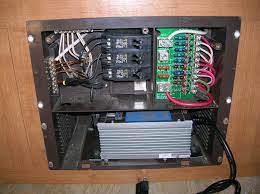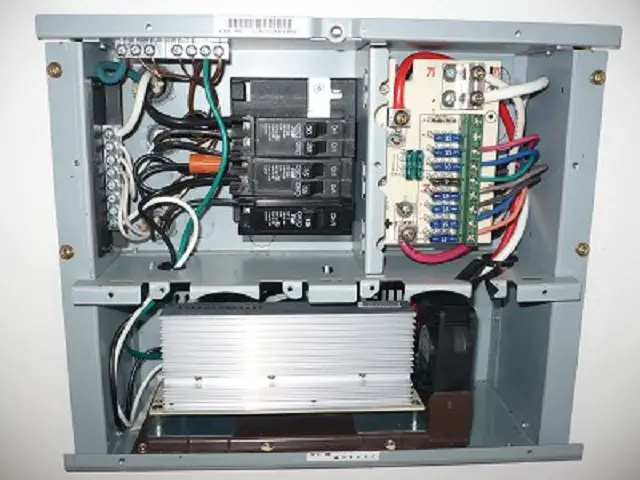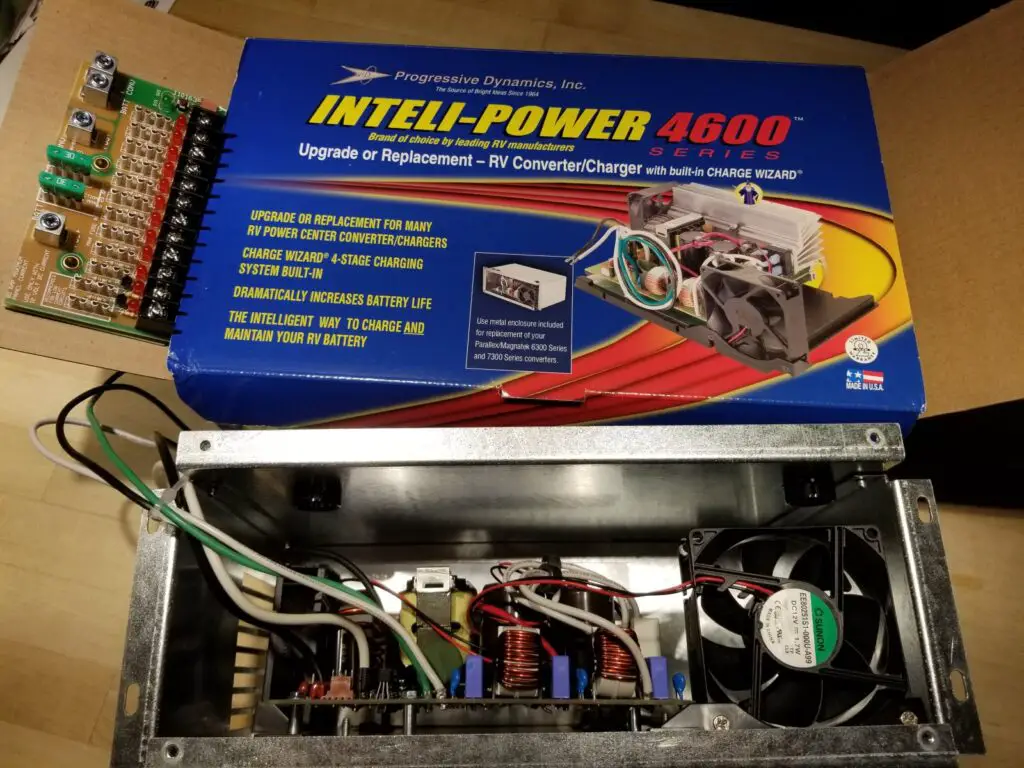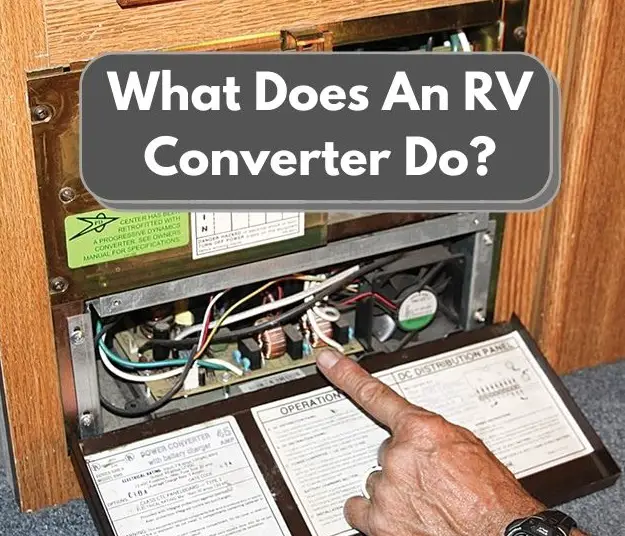If you’re new to RVing or you’re in a situation where you are troubleshooting electronic issues with your rig, you’re probably wondering: what does a converter do in an RV?
An RV converter converts 120-volt AC power from an outlet (like shore power at an RV campsite or a residential power socket) into 12-volt DC power that is used by your RV’s electronics, and also charges your RV’s batteries while you’re plugged in to an external power source.
Your RV’s power converter is a critical component of your RV’s electrical system, so it’s important that it stays functioning properly.
We’ll cover the ins and outs of what RV power converters do in this guide.
What Does An RV Power Converter Do?
An RV power converter has two main functions:
An RV Converter Converts Power For Your RV
As the name implies, your RV converter’s main job is to convert power.
When you plug your RV into an external power source, you’re getting standard 120-volt power. Your RV needs 12-volt DC power to run things like lights, fans, and other electrical items inside your RV, and this is where your RV converter comes in.
The RV converter simply converts 120-volt power to 12-volt DC power so it can be used by your RV.
Your RV Converter Charges Your RV Batteries While Plugged In
While plugged into shore power, your RV power converter will charge your RV’s batteries in addition to powering the 12-volt items that are normally run on battery power.
Charging RV batteries without a converter can be a time-consuming process and takes extra work, so having a converter that does this job is both practical and convenient.
The RV Converter Distributes Voltage
The RV converter distributes the converted DC voltage to your RV’s DC-powered components and distributes the incoming AC voltage to your AC-powered appliances through the breaker panel.
How Does An RV Power Converter Work?

The operation of an RV power converter is simple: when your RV is plugged into shore power (such as a power receptacle at your home or on an RV campsite), the RV converter kicks in and converts the AC power to the DC power needed by your RV’s 12-volt electrical components, while simultaneously charging your RV batteries.
In most cases, there are no additional steps you need to take or switches to turn on in order to engage your RV converter- just plug in your RV and you’re good to go.
Running An RV Converter Without A Battery
You can run your RV converter without a battery hooked up, but it has more drawbacks than benefits.
You can read more about this in our guide: will an RV converter work without a battery?
How To Find Your RV Converter
Most often your RV converter is located near or under the electrical control panel in your rig, but there are many different locations it might be in depending on the year, make, and model of your RV.
See our guide, where is the power converter in my RV, for more info on how to find it.
Different Types Of RV Converters

Multi-Stage and Smart RV Converters
Multi-stage or “smart” RV converters use different stages, or power output levels throughout the battery recharge process to recharge your RV batteries more efficiently while your RV is plugged in.
These smart converters also know when to stop charging your RV batteries when they’re full to prevent damage from overcharging, giving you longer battery life.
Multistage RV converters have been in use for the past several years, and you can gain some big benefits by swapping out an older single-stage converter with a multi-stage model.
High Output RV Converters
Because today’s modern RV electrical systems need more power than ever before, high-output RV converters are now being offered.
As their name states, they put out a higher amperage that will adequately power all the items in your rig while also charging your RV’s batteries faster than old RV converter models will.
Deck-Mount RV Converter
Deck-mount RV converters can be single-stage, multi-stage/smart, or high-output varieties, but their design allows them to be installed anywhere in your RV, making them a bit more versatile if you need to replace your converter and want control over where you are placing it.
Distribution Panel RV Converter
Although the name is a bit self-explanatory, distribution panel converters are installed in the RV’s control (or distribution) panel.
This is the type of converter you’ll be looking for when replacing or upgrading your existing RV power converter.
RV Converter Vs RV Inverter: What’s The Difference?
Converters and Inverters often get confused in the RV world, but they do two entirely different things:
Converters decrease voltage (as in converting 120-volt AC power to 12-volt DC power).
Inverters increase voltage (converting 12-volt DC power to 120-volt AC power).
A good use for an inverter would be like running a TV or other AC-powered unit in your RV while not hooked up to shore power.
Your RV batteries’ 12-volt DC power is not strong enough to power the TV, so you would use an inverter to be able to run these heavier-use electronics.
Why Do You Need An RV Converter?

You’ll need an RV converter if any of the following situations apply:
- You don’t want to have to manually charge your RV batteries
- You want to keep your RV batteries from constantly draining and use shore power instead
- You have AC-powered appliances in your RV or travel trailer that you want to use, and don’t have an inverter.
What Does A Converter Do In An RV? Wrapping Things Up
We hope this article explained what an RV power converter does and why having one is important for nearly every RV.
Are you considering adding or upgrading your RV converter? Let us know what model you chose and how it’s working in the comments below.
Having problems with your converter? Check out our guide to what happens when the RV converter goes bad to learn about symptoms and fixes.

